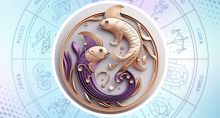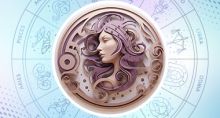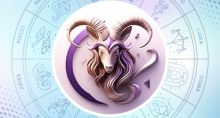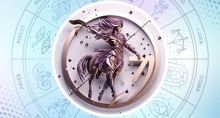The Story of Lord Murugan’s Birth
Murugan, the son of Shiva and Parvati, is also the sibling of Ganesha, the elephant-headed deity. There are many legends about the birth of this handsome warrior god in Hindu mythology.
When Shiva Burnt Kama
After Sati, the wife of Shiva, died, she was reborn as Parvati in the family of Himavan, the King of the mountains. When she came of age, she did severe penance to wed Shiva. Pleased, he married her, and they spent their days in Gandhamadana Parvat. Shiva went into deep meditation, and Parvati served him with devotion.
At that time, a demon called Surapadma captured and imprisoned all the gods. Heaven was empty, and the demons ruled over all three worlds. The demons were torturing the gods, who came to know that their plight was due to the curse they attracted by attending a Yagna conducted by Daksha, Sati’s father, even though Shiva was not invited to it.
The gods prayed to Brahma and Vishnu to help them. But they said that the demon had a boon whereby he could be killed only by a son of Shiva. So, Shiva and Parvati had to give birth to a child. But Shiva was deep in meditation, and he had to feel attraction toward Parvati.

So the gods approached Manmadha, the god of love, and asked him to disturb Shiva's meditation and get him to focus his attention on Parvati. Manmadha went to the Gandhamadana Parvat and sent the arrows of love toward Lord Shiva. Shiva became angry and opened his third eye. Manmadha was reduced to ashes.
The gods requested Shiva to calm down and explained the situation. So Shiva restored Manmadha’s life, but with a caveat that he would be invisible. The six sparks that burnt down Manmadha were carried by Agni to Saravana lake. There the six flames turned into six babies who were taken care of by the six Krithigai maidens (Pleiades).
Parvati embraced the six children, and they merged into one baby with six faces named Eesanam, Tathpurusham, Vamadevam, Agoram, Sathyojatham, and Adhomugam. The child had many names, like Skanda, Shanmukha, Subrahmanya, Muruga, Kanda, Karthikeya, etc.
Parvati gave Muruga a Vel (spear), and the boy led the gods in battle against the demon Surapadma. He defeated the demon who desired to remain at Muruga’s feet. As he had split into two parts, Muruga turned him into a peacock and a cock. The cock became part of Muruga’s flag, and the peacock became his vehicle.
Kalidasa’s Version
Kalidasa's 5th century CE epic poem Kumarasambhava ("The Birth of the War God", has a similar version of the story. The gods wanted Skanda to be born in order to kill the demons Taraka, Simhamukha, and Surapadma. The 3 brothers had a boon that they could be slain only by Shiva's power (Muruga was born purely of Shiva). In this version, Shiva was deep in meditation, mourning the death of Sati, and not married to Parvati. The gods sent Parvati to seduce Shiva and marry him. But Shiva was not attracted to Parvati. So the gods roped in Manmadha. As he had no physical relations for many years, Shiva's seed had become very powerful. Fearing the result, the gods sent Agni (Fire god) to interrupt Shiva's and Parvati’s lovemaking. Agni received the seed, and as it was very hot, he dropped it into the Ganges, and Skanda was born.
The Epic Version
The Hindu epics, Mahabharata and Ramayana, contain many legends of Muruga. In the Vana Parva of the Mahabharata, Chapters 223 to 232 mention the legend of Skanda, but here, he is the son of Agni and Svaha.
In Valmiki's Ramayana, Chapters 36 and 37 talk about Skanda, but as the child of Rudra (Shiva) and Parvati, who is born with the help of Agni and Ganga.
The legends often vary within the same text. In the Mahabharata, for example, the Vana Parva describes Skanda as the son of Agni, while the Shalya Parva and the Anushasana Parva say that he is the son of Maheshwara (Shiva) and Parvati.
In Vana Parva, Shiva and Parvati are not involved in Skanda’s birth. It says that Agni visits a hermitage of 7 married Rishis or sages, where he meets their wives. He is sexually attracted to all the seven wives, but they do not reciprocate.
Svaha feels attracted to Agni, but Agni is cold to her. Svaha then took the form of six of the wives- one by one - and slept with Agni. But she did not take the form of Arundhati (Sage Vasistha's wife), as Arundhati' possessed extraordinary virtuous powers. Svaha deposited Agni’s semen into the reeds of the Ganges river, where it developed and was born as the six-headed Skanda.
There is also a totally different legend in some later books of the Mahabharata, which claim that Shiva and Parvati were Skanda’s parents. While they were making love, they were disturbed, and Shiva inadvertently spilled his semen on the ground. The semen incubated in the Ganges and was preserved by the heat of Agni. The fetus developed into Kartikeya on the banks of the Ganges.
Another myth says that it was Shiva, as an ascetic celibate, who gave Taraka the boon. On learning about the boon, the gods decide to lure Shiva into a relationship by using Parvati. Parvati seduced the yogi Shiva and wed him so that Skanda could be born.
Kartikeya's legends vary from region to region. In the north and west, he is a perpetual bachelor, even though Sanskrit texts mention that Devasena is his wife. Sanskrit works like the Kathasaritsagara sing praises of his youth, beauty, and valor. The subject of Kalidasa’s famous lyrical epic, Kumarasambhava, is the birth of Murugan or Kumara.
Worshipping Murugan is believed to bring many benefits, including freedom from karmic burdens.




















